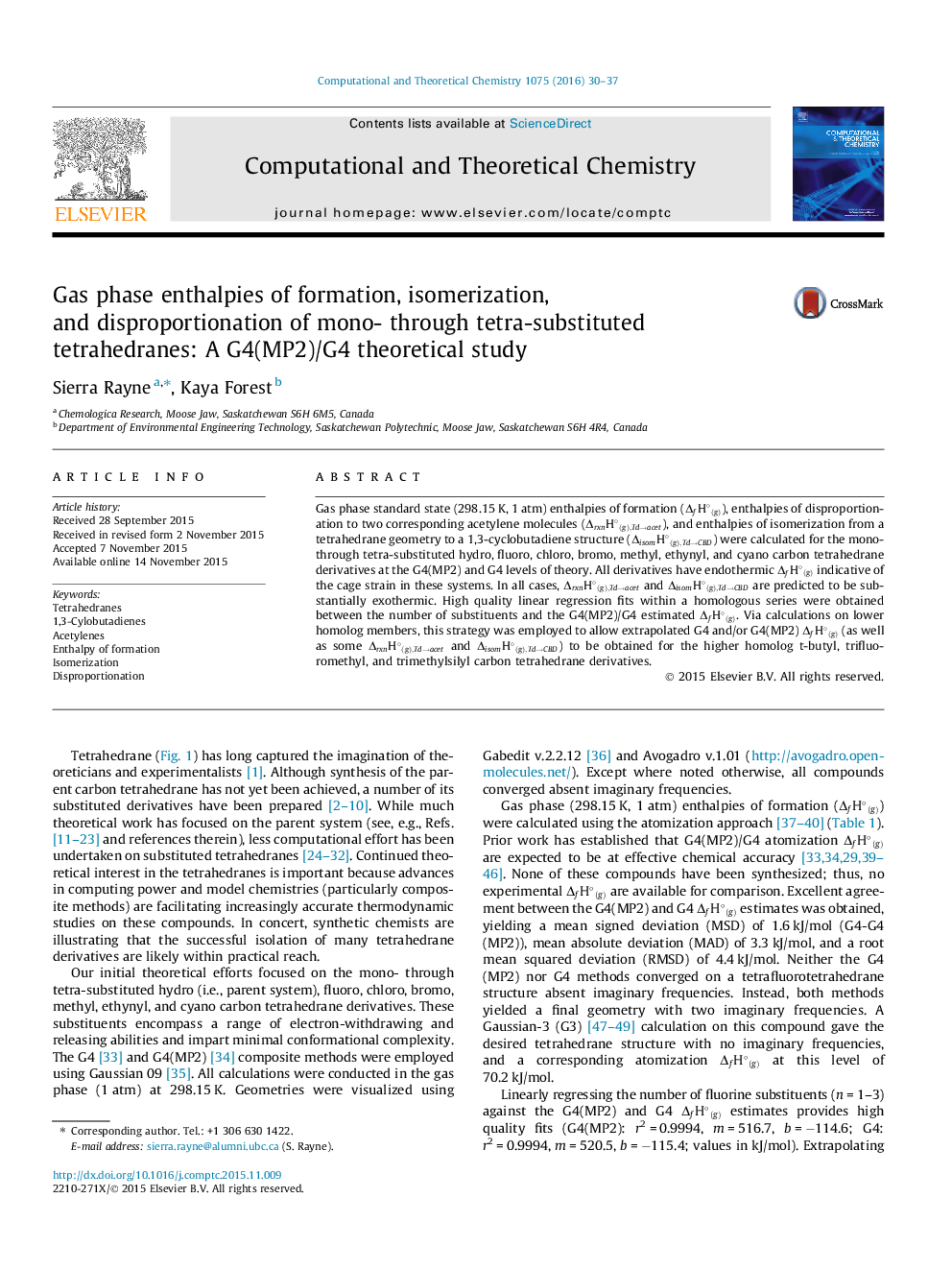| Article ID | Journal | Published Year | Pages | File Type |
|---|---|---|---|---|
| 5393014 | Computational and Theoretical Chemistry | 2016 | 8 Pages |
â¢Enthalpies of formation, disproportionation, and isomerization calculated for tetrahedranes.â¢All derivatives have endothermic enthalpies of formation indicative of high ring strain.â¢Extrapolated ÎfH°(g) calculated for t-butyl, trifluoromethyl, and trimethylsilyl carbon tetrahedrane derivatives.
Gas phase standard state (298.15 K, 1 atm) enthalpies of formation (ÎfH°(g)), enthalpies of disproportionation to two corresponding acetylene molecules (ÎrxnH°(g),Tdâacet), and enthalpies of isomerization from a tetrahedrane geometry to a 1,3-cyclobutadiene structure (ÎisomH°(g),TdâCBD) were calculated for the mono- through tetra-substituted hydro, fluoro, chloro, bromo, methyl, ethynyl, and cyano carbon tetrahedrane derivatives at the G4(MP2) and G4 levels of theory. All derivatives have endothermic ÎfH°(g) indicative of the cage strain in these systems. In all cases, ÎrxnH°(g),Tdâacet and ÎisomH°(g),TdâCBD are predicted to be substantially exothermic. High quality linear regression fits within a homologous series were obtained between the number of substituents and the G4(MP2)/G4 estimated ÎfH°(g). Via calculations on lower homolog members, this strategy was employed to allow extrapolated G4 and/or G4(MP2) ÎfH°(g) (as well as some ÎrxnH°(g),Tdâacet and ÎisomH°(g),TdâCBD) to be obtained for the higher homolog t-butyl, trifluoromethyl, and trimethylsilyl carbon tetrahedrane derivatives.
Graphical abstractDownload high-res image (37KB)Download full-size image
